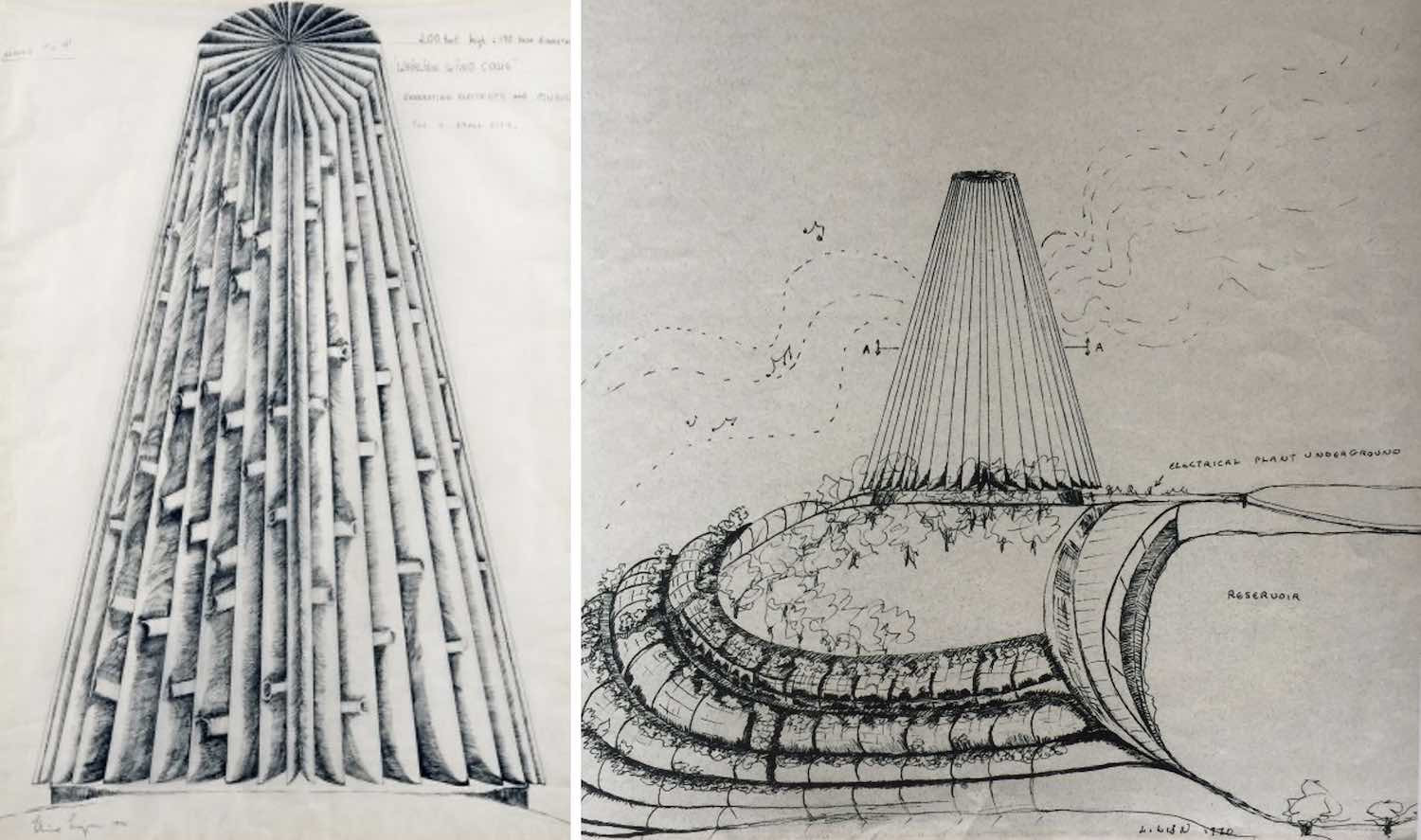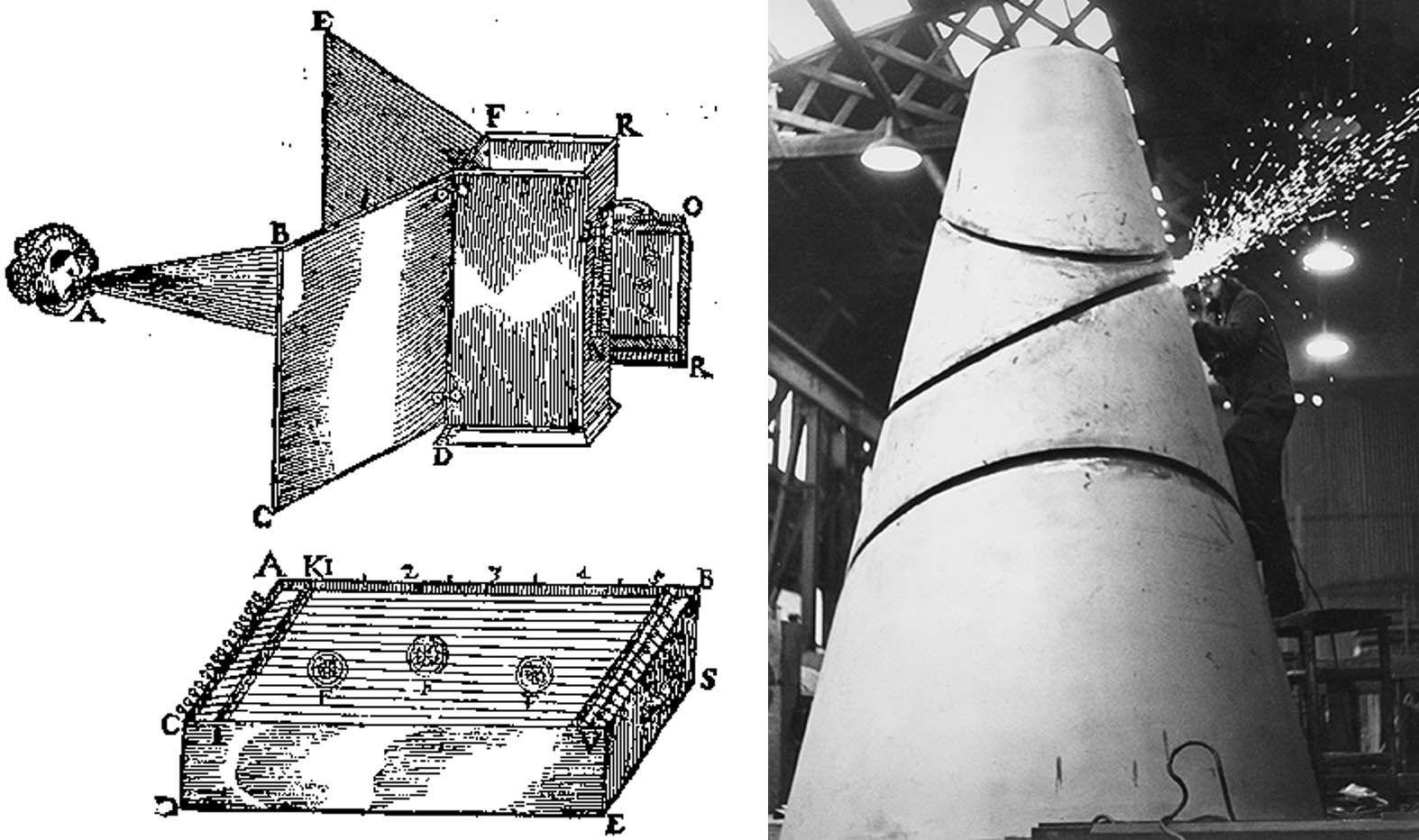aeolian poetics / aeolian politics

//We’re happy to share this guest contribution from Fred Carter following his “Word Becomes Energy” Open Lab held earlier this year!
Emerging from what Rosalind Krauss termed the ‘expanded field’ of site-specific artistic practice in the late 1960s, Liliane Lijn’s ‘Whirling Wind Tower’ engages wind energy as an aeolian terrain for sculptural intervention.[i] Sketched in 1970 but never realised, this speculative design was intended to capture wind through vertically nested turbines, spiralling air flow into a downward vortex to maximise its potential energy and pumping water into a reservoir to provide hydroelectric power for a small community. Subverting the form of the nuclear power plant cooling towers it might eventually replace, the sculpture drew on Lijn’s work with engineers working in renewables to develop a turbine which, like the REC prototype below, generated energy through vortices rather than the conventional rotation of blades. Most strikingly, the tower was also conceived as an aleatory instrument converting ‘the mood of the wind itself’ into an acoustic installation, echoing the ‘Aeolian harp’ as a poetic trope for translating elemental force into aesthetic form.[ii] As Lijn puts it, the turbine both generated ‘practical energy for physical needs’ and offered a ‘lyrical’ resource that might energise regenerative, resistant, or revolutionary social transformations.[iii]

In its attempt to meet the meso-scale material energy needs of a community and, at the same time, to engage a more expansive sense of wind’s political, lyrical, or infrastructural forms, ‘Whirling Wind Tower’ marks a turn in Lijn’s work to ‘social sculpture’ during the energy crises and political upheavals of the 1970s. Returning to this project during an REC open lab session in May, I was struck by the question of how we might reconfigure the concept of lyric needs in the thick of another energy crisis. What forms might register the politics of wind energy that coalesce around the horizon of transition and ongoing Indigenous resistance to green colonialism, as the shift to wind energy envisaged by the Swedish settler state remains dependent on extraction and expansion across Sámi territories?[iv] If, as Cymene Howe and Dominic Boyer have suggested, this contested resource frequently evades capture within a singular political ecology, Lijn’s expanded field of sculpture speaks to their anticolonial conception of an ‘aeolian politics’ in its examination of ‘how wind power becomes contoured by land and desire’ or ‘by infrastructure and technological management’ according to the instrumentalising logic of capital accumulation.[v] Engaging both the material and lyric functions of infrastructure – those interlocking forms through which the turbine comes to structure specific collectives, resource aesthetics, or energy futures – ‘Whirling Wind Tower’ oscillates between this aeolian politics and its poetics.[vi]
(Fred Carter, Sep 2022)

[i] Rosalind Krauss, ‘Sculpture in the Expanded Field,’ October, vol. 8, 1979, p. 44.
[ii] Liliane Lijn, ‘Whirling Wind Tower Typescript,’ 1970.
[iii] Liliane Lijn, ‘Whirling Wind Koan,’ 1970.
[iv] Eva Maria Fjellheim & Florian Carl, ‘Green Colonialism is Ruining Indigenous Lives in Norway,’ Al Jazeera, 2020.
[v] Cymene Howe & Dominic Boyer, ‘Aeolian Politics,’ Distinktion: Journal of Social Theory, vol. 16, no. 1, 2015, pp. 32-33.
[vi] Peter Larkin, ‘The Politics & Poetics of Infrastructure,’ Annual Review of Anthropology, vol. 14, 2013, p. 329.
